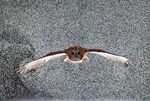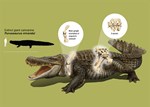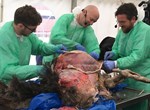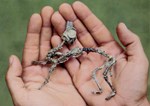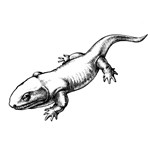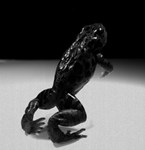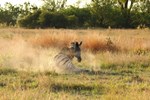-
Can mosquitoes stop us going bump in the night?
In a new paper published in Science, an international, collaborative research group led by the …
-
Innovative animal tracking system developed by the RVC wins ERC Proof of Concept Grant
An innovative tracking system developed by Professor Alan Wilson and his research team at the Royal …
-
Flying high: Professor at the Royal Veterinary College elected as Fellow of prestigious Royal Society
Professor Alan Wilson FRS of the Royal Veterinary College (RVC), has been elected a Fellow of the …
-
First published study from the RVC’s Graduate Diploma in Equine Locomotor Research explores the impact of farriery interventions on horses’ symmetry
A peer-reviewed study, by the Royal Veterinary College (RVC), which examines the effect of farriery …
-
Birds in flight share lessons for future aircraft designs
The measurement apparatus. In front, high-speed cameras record the Tawny Owl as it flies through …
-
Coming along in leaps and bounds – crocodiles can gallop but alligators can’t, new study finds
It’s a motion more closely associated with horses, but researchers have found that more species of …
-
Ancient bus-sized crocodile had extra vertebra to assist movement, new study shows
An ancient caiman that weighed as much as an Asian elephant (3 tonnes) and almost was as long as a …
-
RVC engages public with ostrich anatomy at Norwich Science Festival
The Royal Veterinary College’s (RVC) Professor John Hutchinson and his team dissected an ostrich in …
-
Dr Zoe Davies brings biomechanics of walking to North London community
Last week, the Structure and Motion Lab’s Dr Zoe Davies paid a visit to a community group for older …
-
Early Jurassic dinosaur shifted from four legs to two legs as it grew up
Scientists have discovered that an early species of dinosaur, Mussaurus patagonicus, could only …
-
New study explains how fish got their fingers
New analysis of anatomical evidence shows how the limbs of land vertebrates (such as mammals and …
-
Galloping isn’t such hard work for horses
For the first time, external mechanical work in galloping racehorses has been measured using force …
-
300 million-year-old animal reanimated as a robot
An international group of scientists has constructed a robot, which is able to recreate how a 300 …
-
Wildebeest muscles almost three times more efficient than a car engine
Wildebeest muscles have an extremely high efficiency of 62.6%, meaning that almost two thirds of …
-
Made for the long jump: RVC study reveals how frogs use their unique skeletal anatomy to improve their jumping capabilities
High speed video of a frog jumping, used as a basis for computer simulations (not shown)
As well …
-
SML research featured on BBC4 documentary 'Can Science Make Me Perfect?'
Tune in to BBC4 this evening at 21:00 for the airing of ‘Can Science Make Me Perfect?’ with Alice …
-
Butterfly documentary filmed at SML
The Structure and Motion Lab has had a two-day visit from French film makers of Peaks et Trames …
-
From the geometry of a toppling table to a new ‘grazing’ gait? And perhaps why monkeys walk weirdly
In a new paper published in the Royal Society journal Biology Letters, two Royal Veterinary College …
-
CONGRATULATIONS!!!
Congratulations to our newest professors, Professor Jim Usherwood and Professor Richard Bomphrey, …
-
New research shows that human modification of landscapes reduces mammals’ range
A new study suggests that mammals move considerably shorter distances in areas that have been …





